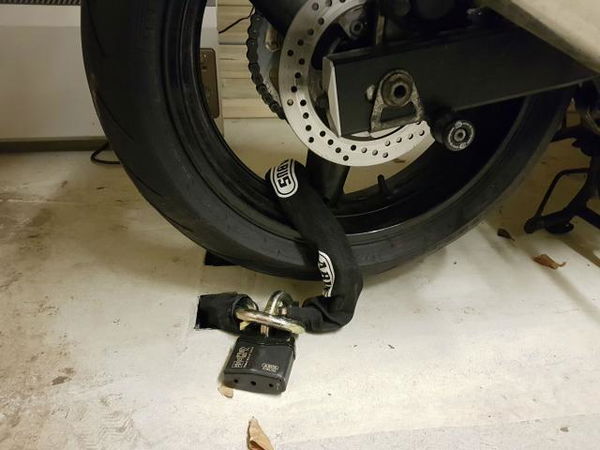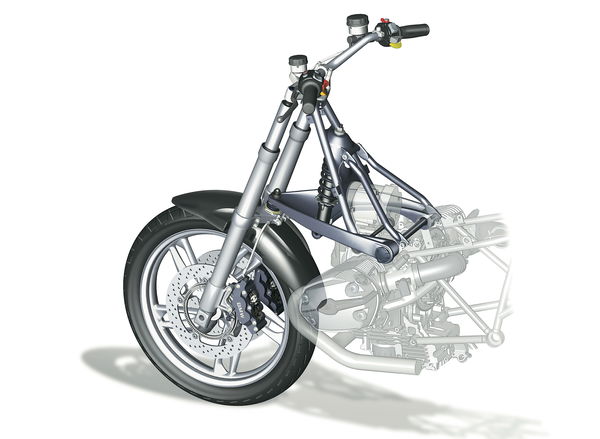How to… store your motorcycle in winter
Worried about the effect all this road salt is having on your motorcycle? It's not too late to take her away from all this until spring...

By Alan Dowds
IDEALLY, you'd be riding right through winter, but even the most stubborn year-round motorcyclists can get fed up when the weather's like it as at the moment.
If that's you, don't just park it and wack a cover on it - and especially not without cleaning the road salt off. That's a recipe for it looking like a barn-find by spring. Instead, make use of our tips for ensuring it comes out of hibernation in perfect condition…
1: Storage beater
We're assuming you don't have a climate-controlled, air-conditioned, low-humidity storage facility with military-grade security - otherwise why are you here? In practice, most of us have a chilly lock-up at best. But you can still take steps to keep dampness and moisture away: counter-intuitively, better ventilation can help prevent condensation and damp building up in outside garages or sheds.
If you can stretch to the cost, a low-wattage oil-filled radiator or electric greenhouse heater will help maintain a dryer atmosphere. Avoid oil or wood burners though, which can cause condensation from their combustion. They're also more of a fire risk.
A decent breathable bike cover will help keep dust and grime away, and of course you'll need appropriate security in place. Bolt-down wall or ground anchors are relatively easy to fit. Sinking one into a concrete floor, as shown, is more complicated and expensive but offers the greatest chance of finding your bike where you left it.

Main picture: Johan Viirok
The major killer for tyres is having the weight of the bike sitting on them in one position, often with pressures dropping over winter. That puts a flat spot onto the bottom of the tyre, which won't leave visible damage straight away, but can cause sidewall cracking and internal carcass damage over time.
Put the bike up on stands, so there's no weight on the tyres. If you don't have a paddock stand for the front, you may be able to lift it with a scissor-type car jack, but excercise extreme care in doing so. Be sure to choose a point that can bear the bike's weight and use a piece of wood to protect surfaces, as shown. Raise the bike very slowy, checking its stability as you go, and back off if in doubt.
The other big killer for tyres is UV light, so a dark, cool garage is actually not a bad place for them in that regard.
Lead-acid batteries hate winter, and they also hate inactivity. So if you're planning on leaving the battery on the bike for three months in sub-zero temperatures, you might as well save the fuss and put it straight in the bin in October.
If you've got an Optimate trickle-charger or similar, it may be convenient to leave a plug permanently wired-up to the battery terminals. Route it to an easily-accessed location, such as under the pillion seat, as shown, and you'll be able to plug in the charger when needed without even exposing the battery.
If it's kept charged, it'll be okay down to normal UK winter low temperatures.
Lithium batteries are more forgiving, and cope better with lack of use. But they also cost a fortune, so best not take any chances, and keep yours on charge with a proper lithium charger.
In a perfect world, you'd do a nice full oil and filter change just before you lay her up, so the engine is left sitting with fresh, clean lube inside for the winter. But unless your oil is really old and nasty, it's unlikely to cause any massive harm if you don't bother and spend the time drinking cheap sherry instead.
What will cause trouble is frozen coolant. We covered anti-freeze checks and changes last week, so if in doubt, get the anti-freeze changed out for fresh stuff.
We could fill the entire Visordown website with myths, rumours and legends about what to do with your fuel tank over winter. Lots of folk seem to think that petrol will turn into some sort of motorcycle kryptonite if you leave it in the tank for more than a fortnight, destroying your fuel system from the inside out thanks to green Nazis putting ethanol in, or something. Okay – letting fuel evaporate inside old dirty carburettors might not be the best plan. But for most people, for a four-month spell in the garage, on a fuel injected bike, there's not too much to worry about. Top the tank up, so there's nowhere for rust to start, and you'll be fine.
Putting a dirty, damp bike away is a recipe for corrosion disaster, so a bit of work is needed here. Give her a proper deep-clean before laying her up, getting all the dirt, grime, muck and crud out of all the corners, paying special attention to neglected areas around the rear shock, under mudguards and inside the brake calipers. Dry thoroughly, then get to work with an anti-corrosion spray, such as the Sdoc100 shown, which leaves a tenuous layer of oily protection that's hard to shift even when you want to. ACF100 is a popular preparation too, but the important thing is to use something. Even WD40 will do if you've nothing better, though it will need re-applying over the winter. Use a good chain cleaner then a quality lube on the chain and sprockets.
Give all remaining exposed metal a good spray, paying attention to shocks, fork legs, footpegs, exhaust, levers, switches, the lot. Brake discs and calipers are a worry here – you don't want to wreck the pads by soaking them in grease, but you also don’t want the discs, bolts and pins all rotting away over winter. We'd consider a small amount of a thinner spray like WD40 – but be very careful to clean it off with loads of brake cleaner in the spring…











